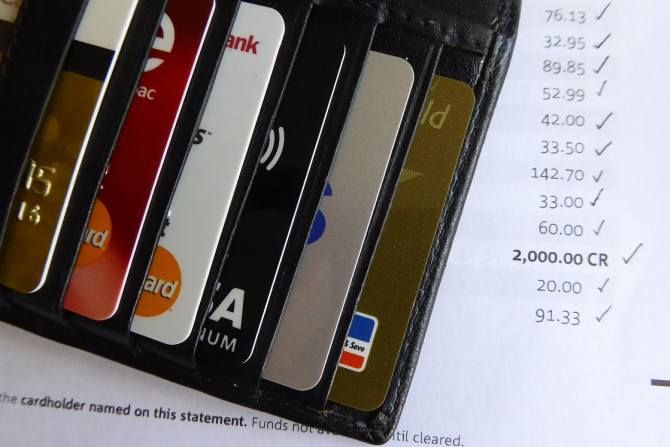Is your credit card statement greek to you? Abhishek Agarwal simplifies it for you

Every month the credit card company sends a statement to all the card holders.
So what do you do? Look at the amount due and the due date and in case required also give a glance at the minimum amount due and toss it aside.
Have ever tried to look at what is printed on the reverse; in case you have never done so or if you did and did not understand it then the discussion that follows is just for you.
Before we try and explain some terms that may be confusing let us have a look at things that one must focus on when going through the credit card statement.
Transaction details
It is important that the card holder go through the list of transactions that are billed to her/him. This will ensure that no fraudulent transactions, wrong transaction amount (119 billed as 911) or double transactions are not included in the statement.
If not reported within a stipulated time period the credit card company assumes that the transactions are correct and reporting to them after that might not help.
Due date
Well this is a no brainer and generally tends to remain same every month but it is still important that you spend a moment looking at it.
There might a change in billing cycle, the due date may be coinciding with holidays or you may be travelling etc; thus when you get your statement look at the due date and make sure that if required you make a mental note to adjust to any changes so that you pay on time.
Credit limit
Again this is something which needs no explanation but is nevertheless important.
Credit limit is the upper limit of the amount you are allowed to swipe on the card in a billing cycle. It is advisable that the credit limit be revised from time to time if an eligibility criterion so allows and if your expenditure on the credit card has been growing steadily over time.
A high billed amount in proportion to the credit limit is best for the CIBIL rating. This credit limit assumes more significance if one is planning to travel abroad or is looking at making a big purchase on the credit card.
Some terms that require extra attention!
Minimum amount due
This is the amount which is way lesser than the total amount due and paying this means that no late payment penalty is imposed and no reporting is done to CIBIL.
This may appear as a lifeline at some point of time when you have overshot the spending limit or are financially stretched due to some reason.
However do remember that by paying the MAD you are saving only the late payment fee; you still will be charged interest on the outstanding amount as per the rate mentioned in the schedule of charges.
A common misconception among card holders is that paying the MAD saves them from all charges which is incorrect.
Grace period
This is time that is allowed by the credit card company to the card holders to pay their dues without attracting any charges. Thus after the billing cycle (usually 30 days) ends a card holders still has 20-25 days to pay the dues.
Thus effectively from the start of the billing cycle the customer has 50-55 days to pay for what s/he has used. However here is the catch...
This grace period is available only for the new transactions and not for the outstanding dues that may be carried over from the last billing cycle.
Grace period is also not applicable for cash advances.
This also is something which customers miss reading and understanding when they apply for credit cards.
Cash advance
There are two things that require attention; one is cash advance limit and then cash advance charges. Cash advance limit is different from the credit limit; however it is fixed percentage of the credit limit.
The cash advance limit defines the maximum amount the card holder can withdraw in cash using the credit card. Now we come to the charges: cash advance does not enjoy any credit-free period.
The interest (mentioned in the schedule of charges and is usually quite high) is charged from the day of withdrawal till the date by which the card holder repays the amount.
Annual Percentage Rate (APR)
Delay in paying dues attracts interest on the outstanding amount for the delayed duration; this interest rate when expressed as an annual rate is known as APR.
Remember APR does not only vary from bank to bank but also varies depending on the customer's status.
For a lower amount of default the APR will be lower, it will also vary depending on the type of transaction; for cash it is generally higher.
When you have a look at the schedule of charges then you will see the interest rates are expressed not only as monthly but annual rates too. Sometimes APR may be as high as 40 per cent or more
So next time you look at your credit card statement, go through it carefully and hopefully you can understand it since it is no more Greek to you.
Photograph: PixaBay.com
The author is Co-founder and Director CreditVidya.com.










